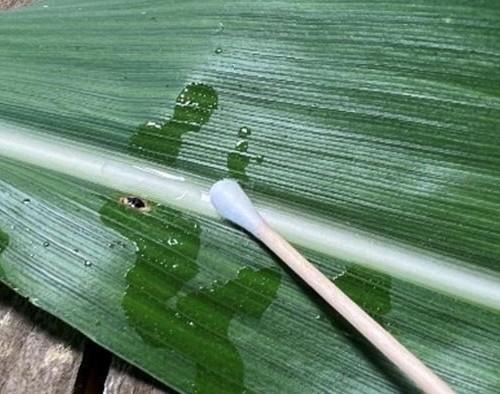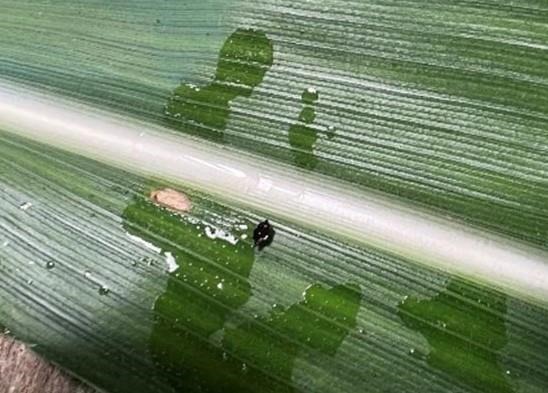Most debris and droppings will rub away easily, but some will require some more time or gentle scraping with a fingernail. Just be careful to not rub hard enough to tear the leaf tissue. Rubbing alcohol or hand sanitizer is the best solvent for most spots, but water will work in a pinch.
If the spot will not rub away with the technique above, tar spot is still not a certain diagnosis, but much more likely. More steps can be taken by a diagnostician to confirm tar spot.
The example shown here is very deceiving because it presented with a raised shiny black spot surrounded by dead corn leaf tissue. But when the technique was applied, it was revealed that the black spot was actually a very small leaf from another plant that had fallen onto the corn leaf. The byproducts of the microbial degradation of this debris resulted in some superficial damage to the corn, but no disease is present here.

Figure 1. A suspicious spot is soaked in alcohol (Source: Alyssa Collins, Penn State Extension).

Figure 2. Rubbing with a cotton swab following soaking removes the spot and reveals debris as the culprit. (Source: Alyssa Collins, Penn State Extension).
If you detect suspicious symptoms in Pennsylvania corn, please help us track this disease by submitting your find through our reporting system. These reports help us improve our recommendations to farmers across Pennsylvania and the region. If you are unsure about the diagnosis, contact your nearest Extension Educator for help identifying the disease. You can also alert state specialists Alyssa Collins and Paul Esker about the potential positive finds.
More details about tar spot and its causal agent can be found in this publication from the Crop Protection Network and regularly checking the Corn ipmPIPE to see where the latest positive finds were observed. If warranted for tar spot, fungicide recommendations can be found in the updated "Fungicide efficacy for control of corn diseases."
Source : psu.edu